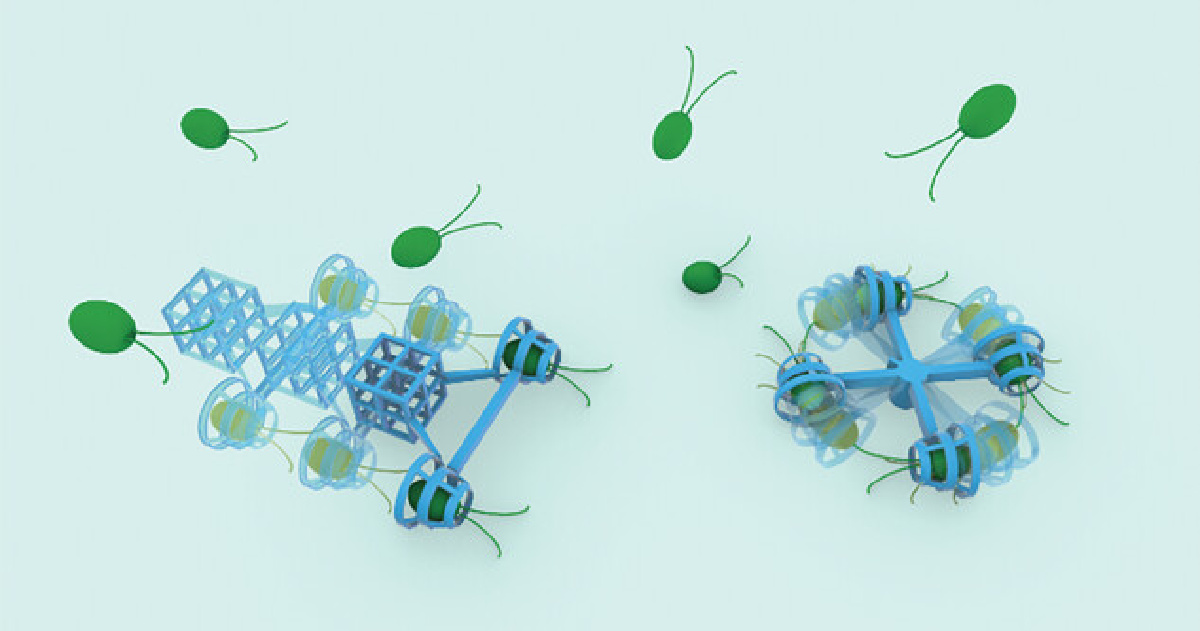
When you see green scum floating on the top of a pond or lake, there’s a good chance you haven’t given much thought to what it looked like under a microscope.
And even if you did, would you imagine the particles riding “scooters?”
More specifically, scientists have given energy efficient algae “micromotors” and turned them into power sources for micromotors.
Chlamydomonas reinhardtii are single-celled green alga with two long flagella that help them swim at 100 micrometers per second.
This quick movement is what inspired Naoto Shimizu and his co-authors to try to harness the abilities by fitting them with a teeny tiny harness.
They designed two micromachines that consist of small baskets to trap the algae while allowing it’s flagella to still move freely.
The baskets are then hooked together, forcing a bunch of individual alga to work together. Without joining the energy of several of them, they wouldn’t be able to generate enough force to move anything larger than a single cell.
One micromachine is a “scooter” and the other is a “rotator.”
In the latter, four algae sit in baskets at the end of four arms, with the center pinned down. As they swim, they spin the rotator at 20-40 micrometers per second.
Getting the biohybrid machine to move forward linearly was more of a challenge – which is where the scooter comes in.
Two algae face the same way and can propel the “scooter” forward, hopefully in a straight line.
The aglae actually got it to twist, turn, and tumble because it wasn’t tethered in place and the alga were trying to go at different speeds.
These two machines are part of a host of new designs meant to power vehicles in the future, and Professor Shoji Takeuchi, senior author on the study, thinks they’re really onto something.
“These methods have the potential to evolve in the future into a technology that can be used for environmental monitoring in aquatic environments, and for substance transport using microorganisms, such as moving pollutants or nutrients in water.”
It’s honestly hard to imagine how something so tiny even works, but it sounds pretty cool.
And like the algae are having the time of their lives.
If you thought that was interesting, you might like to read about why we should be worried about the leak in the bottom of the ocean.